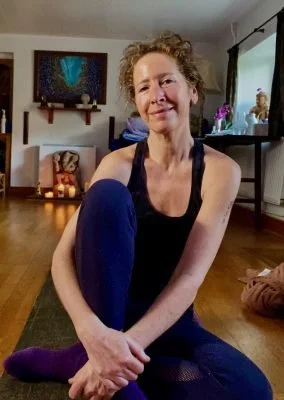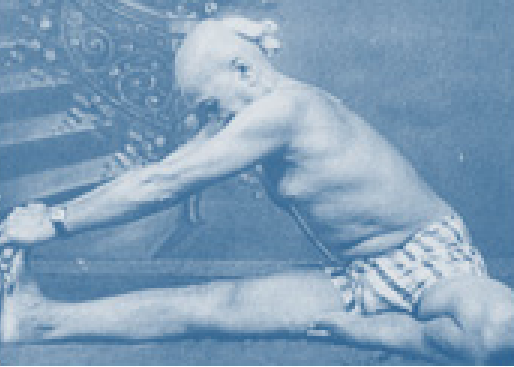
Yoga Therapy
Yoga therapy involves one to one sessions. As the word therapy implies – the aim is to address needs – either structural, emotional or physiological or a combination of these through an individualised program devised from an initial assessment and taking into account the goals, lifestyle and time constraints of the person.
No previous yoga experience is necessary as the practise will be tailored for where you are at. For the young it may help the body develop in a more balanced way. For the adult it may help with posture, flexibility, strength, stability or injury recovery; – or to help with emotional states of anxiety or depression; or to enhance physiological processes through better circulation and improved respiration.
The gift of yoga is that it helps us know ourselves better on all these fronts. It gives us simple yet profound tools that help us transform from conditions of illness and dependency to wellness and self-sufficiency, by helping us find balance in life, peace in ourselves and more ease in our bodies.
What to Expect
An initial session will take place to discuss your needs and goals, then an assessment looking at posture, gait and any movements that present structural challenges, followed by a breathing assessment.
From this session you will receive:
A short practise of a few postures – taking into account how much time can be dedicated to a daily yoga practise.
As and when exercises or yoga snacks to do during your day
A breathing practise if desired
And a follow up 1 – 3 weeks later.
What People Are Saying
“My back which was always an issue is stronger and out of pain. I now know where my weak areas are, how to strengthen them through specific yoga moves, and to to be aware when I fall back into old postural habits. Thanks Madeleine.”
— Steve
“Breath-centric asana as taught by Madeleine with its slow movements in and out of postures coordinated with either an inhalation or exhalation is like doing a moving meditation. I could never concentrate in meditations when told to follow my breath. I had way too many thoughts! With this though – I have a task, and at the end I feel so grounded and calm, and that feels amazing!”
— Val
“Through breath centric asana I have learnt to breathe more calmly and deeply, which has made me in turn so much calmer, less anxious and present, and better able to weather the ups and downs of my life. Thank you Yoga!”
— Ruth
Breathwork
Although we all breathe, to be able to do so slowly and fully on both the inhale and exhale is something many of us have to cultivate and relearn. The breath intimately reflects our nervous system, and many of us breathe erratically, in a shallow way with areas of our lungs that have essentially become dead spaces where the breath doesn’t reach, and which can become sites of infection.
Many through nervous reaction have diaphragms that move the wrong way as we inhale – called paradoxical or reverse breathing. Breathe caught in the upper part of the lungs, and using the accessory muscles to do the work of the diaphragm – cause anxiety and feelings of ungroundedness.
Others of us have rib cages compromised through bad posture, injury or negative emotional states such as depression, which can’t increase in volume as the breath enters the chest.
Various yogic exercises and breath work can help change these often long standing patterns with results that greatly affect our physiology and emotions – By:
Restoring rib cage movement and expansion
Retraining the diaphragm to work appropriately
Slowing the breath down
Teaching us to have greater present awareness
Who can do Yoga?
Yoga is accessible to all ages. Your yoga practise will be adapted specifically for you and your body.
This applies equally to older beginners who may suffer postural problems, severe stiffness and weakness; and who might otherwise be put off a practise that is too strong and which over challenges the body. Through steady persistence, your body will transform towards greater balance, strength and flexibility.
If you start young, it will help the body to develop in a balanced way; and as an adult will help restore and maintain physical, physiological and emotional balance.
Who does Yoga Therapy benefit?
Those who want to develop their own self practise; working with sequences that are appropriate for their life style, and who wish to maintain a good posture and health.
Those recovering from injury or illness, who need to re-establish correct basic movement patterns, and strengthen their bodies in a gentle yet holistic fashion.
Those whose sporting or vocational activities have seriously imbalanced their bodies, due to the repetitive action of particular muscle sets; and who wish to have a more balanced and symmetrical work out.
Those who require a mentally and emotionally calming practise; to counteract the fragmenting and stressful effects of work or life in general.
Those who wish to improve their breath work as a precursor to a meditation practise.
Benefits of Yoga
INCREASED STRENGTH AND FLEXIBILITY
To move with vigor and ease, muscles require a balance of strength and flexibility as they move across joints. Yoga postures increase flexibility by moving joints through their full range of motion, and increase strength through the controlled movement in/ out of postures.
IMPROVED PHYSIOLOGY
By flexing, extending and side bending the trunk, blood is squeezed through our internal organs, which rely on movement for their optimal function. At the same time, such movements free up the spinal nerves which arise from the spine, improving our physiology, hormonal balance and feeling of well being.
IMPROVED ALIGNMENT
The balanced action of muscles across joints cultivates correct movement patterns, which with time improves physical alignment and posture.
INCREASED VITAL CAPACITY
The function of the heart and lungs is referred to as vital capacity. Bad posture and gravity play havoc on restricting and distorting the chest or thoracic cavity in which they lie. Yoga postures are unique in effectively working the chest, improving vital capacity by increasing thoracic movement and volume and aiding the return of blood and lymph to the heart.
STRONG SPINE
Yoga nurtures the spine's well-being on a deeper level. Through the mindful practice of yoga, stress and tension melt away, allowing the spine to release held energy and find a state of harmony. The breath-centric nature of yoga also nourishes the spine by promoting circulation, oxygenation
PEACE OF MIND
The state of our mind and emotions are intimately related to the depth and steadiness of our breath. Breath is the link between body and mind. Slow steady breathing whilst moving in/ out of postures keeps the mind in the present moment and less distracted by other thoughts. It brings awareness. Time spent in a present state every day considerably reduces mental stress and tension, and helps clarity of mind and good decision making.
“Madeleine’s dual roll as my rolfer and yoga therapist has been a great combination – as I received structural changes that I then could grow into through the yoga practise she set me. At 80 compared to many of my contemporaries my posture is good, and I can still walk with a good stride. My life is enhanced through better movement. Thanks Madeleine!”
Frances
Yoga Therapy & Structural Integration
Old alignment issues in the form of postural deformities caused by life or injury can be very difficult and slow to change. Structural Integration treatments can help with this as they are specifically designed to re-establish natural alignment by working on myofascial structures. However to put life in that re-newed posture, neural re-wiring still needs the help of correct movement patterns learnt through yoga therapy. The two perfectly complement each other








